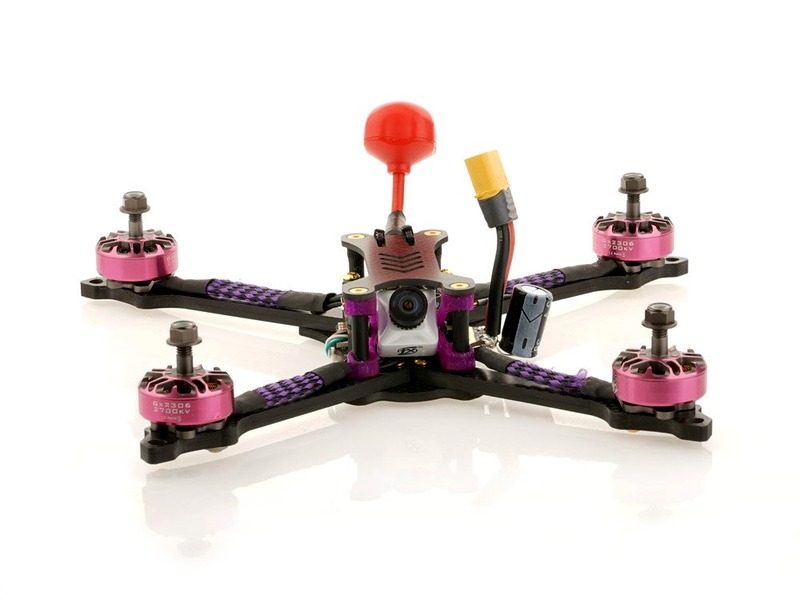How do you control your on a quadcopter?

When it comes to controlling a quadcopter, there are three main components that come into play: the remote control, the receiver and the motors. The remote control is the device used to send signals to the quadcopter which in turn control the motors to make it move. The receiver receives the signals from the remote control and relays them to the motors. The motors are the actual devices that make the quadcopter move, by spinning the propellers in the desired direction.
The first step to controlling a quadcopter is to pair the remote control with the receiver and motors. This is usually done by connecting the remote control to the receiver with a cable or via a wireless connection. Once the connection is made, the remote control will be able to send signals to the receiver and the receiver will be able to relay the signals to the motors.
Once the connection is established, the user will then be able to control the quadcopter by sending signals to the receiver. The most basic type of control is throttle control, which is used to increase or decrease the speed of the quadcopter’s propellers. This is done by pressing the throttle stick on the remote control, which will cause the motors to spin faster or slower depending on the direction and amount of pressure applied to the stick.
In addition to throttle control, the other types of control that can be used to control a quadcopter include yaw control, pitch control, and roll control. Yaw control is used to rotate the quadcopter around its vertical axis, while pitch and roll control are used to move the quadcopter forward, backward, left, and right. This is done by pressing the pitch and roll sticks on the remote control, which will cause the motors to spin in the desired direction.
Finally, the user can also control the quadcopter’s altitude by using the altitude control stick on the remote control. This will cause the motors to spin in a way that will cause the quadcopter to ascend or descend.
In conclusion, controlling a quadcopter requires the use of a remote control, a receiver, and motors. The remote control is used to send signals to the receiver, which then relays the signals to the motors. Throttle control, yaw control, pitch control, and roll control are used to move the quadcopter in the desired direction, while the altitude control stick is used to control the quadcopter’s altitude. With practice and experience, anyone can learn to control a quadcopter.
Comments / Question
2. Hover: Practice hovering in different locations and orientations to improve your ability to keep the quadcopter level and stable.
3. Flight paths: Practice following pre-determined flight paths to improve your ability to control the quadcopter accurately and your sense of the environment.
4. Small turns: Practice making small turns and figure eights to improve your ability to maneuver the quadcopter in tight spaces.
5. Emergency stops: Practice making emergency stops to become more comfortable with the quadcopter’s capabilities.
6. Practice with a friend: Have a friend fly the quadcopter while you observe. This will give you a better understanding of the craft’s behavior and how to control it.
2. Use a flight controller with an integrated gyroscope and accelerometer to help keep the quadcopter level.
3. Use a GPS system to help maintain a level flight path.
4. Use a flight simulator to practice flying and keeping the quadcopter level.
5. Make sure the propellers are balanced and the motors are running at the same speed.
6. Use a flight mode such as Angle or Horizon mode to help keep the quadcopter level.
7. Use a combination of manual and automatic control to help keep the quadcopter level.
8. Make sure the battery is fully charged and the quadcopter is not overloaded.
9. Make sure the wind conditions are not too strong.
10. Practice flying in a wide open area with no obstacles.
2. Always fly in open areas away from people, animals, and buildings.
3. Keep your quadcopter within visual line of sight at all times.
4. Fly at a safe altitude and speed, and avoid flying in high winds.
5. Make sure your quadcopter is in good working order before each flight.
6. Avoid flying over highways, airports, and other restricted areas.
7. Keep away from power lines and other hazards.
8. Be aware of your battery life and land your quadcopter before the battery runs out.
9. Follow all manufacturer instructions when operating your quadcopter.
10. Always use the appropriate safety gear, such as goggles or a helmet.

